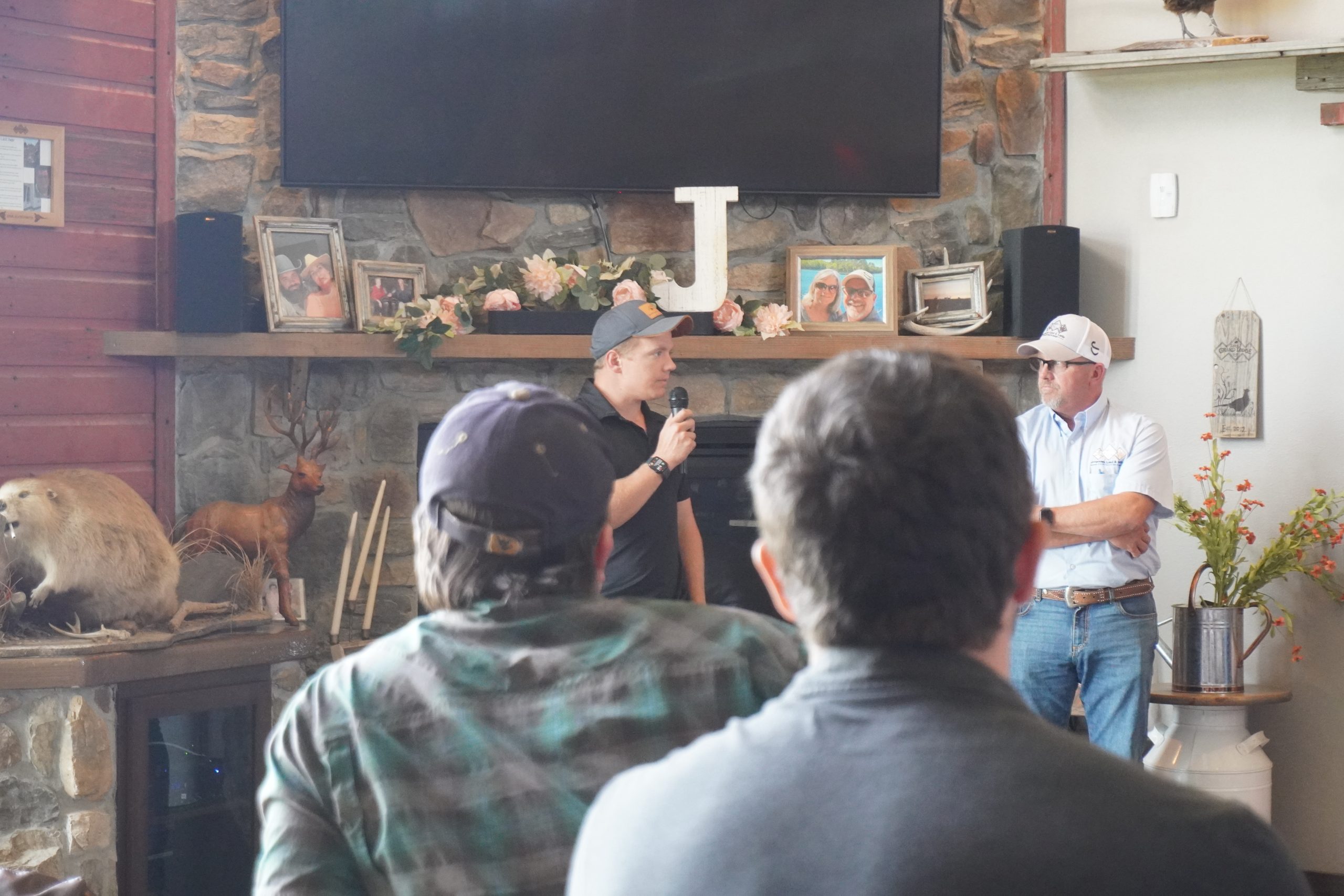Sustainable ranching: Preserving the land for generations to come

In the heart of South Dakota, the Jorgensen family, stewards of the Lazy J Grand Lodge and Jorgensen Land & Cattle, are championing sustainable ranching practices that not only protect the environment, but also ensure the long-term viability of their operations. Hosting a recent gathering of partners and stakeholders, the Jorgensens emphasized the foundational role of soil health in their commitment to sustainable agriculture.
“Without respect for the soil, the entire house of cards will come down,” said Bryan Jorgensen, highlighting the family’s dedication to maintaining financial, operational and environmental sustainability.
The event attracted a diverse group of partners, including representatives from Farm Credit Services, Ducks Unlimited, the U.S. Roundtable for Sustainable Beef and various technology and carbon service providers. These organizations are united in their mission to promote sustainable practices, unlock the value of carbon sequestration and elevate the narrative of modern, environmentally conscious agriculture.
(Pictured above) Nick Jorgensen, echoing the sentiments of his family, stressed the importance of thinking beyond the immediate future, focusing instead on the long-term impact on natural resources. “We want it to be a Jorgensen family business 115 years from now,” he said, underscoring sustainability as a guiding principle for future generations.
The discussions also touched on the challenges of marketing sustainable agriculture, with some ranchers hesitant to embrace terms like “soil health” and “regenerative.” Nevertheless, the consensus was clear: these messages are vital, even if they require pushing boundaries to drive progress.
Leveraging technology and best practices for cattle health and performance
Innovation in cattle health and productivity was at the forefront of a portion of the ranch tour with Merck Animal Health and Jorgensen Land & Cattle. Key topics included the use of RFID (radio frequency identification) technology for individual animal identification, the impact of internal parasites on cattle performance, and advanced genetic evaluation in breeding decisions.
Speakers emphasized RFID identification’s role in improving cattle management. “Individual animal identification is non-negotiable,” noted one speaker. By equipping each of their 6,000 animals with RFID tags, the Jorgensen operation can track comprehensive data on every animal, enhancing operational efficiency and animal welfare.
Another critical issue discussed was the often-overlooked impact of internal parasites.
“We don’t see the negative effects, but they’re extremely detrimental to cattle health and performance,” explained a veterinarian.
The importance of proactive deworming strategies, particularly during key periods like preconditioning and breeding, was underscored, with products like Safe-Guard highlighted for their effectiveness.
The tour stop also explored the use of advanced genetic evaluation to enhance breeding decisions. By leveraging a proprietary system developed with Zoetis, Jorgansen Land & Cattle can obtain genomic predictions for commercial bulls, facilitating informed decisions that maximize the genetic potential of their herd.
Optimizing cattle fertility and efficiency at Jorgensen Land & Cattle
At Jorgensen Land & Cattle, innovative practices are driving improvements in cattle health, fertility and operational efficiency across their expansive feedlot and farming operations. A representative from the farm provided an in-depth overview of their cattle management system, which includes feedlot areas, advanced drainage solutions and a focus on feed quality.
Transitioning to concrete feeding pads has dramatically reduced feed loss and contamination, with the farm estimating more than $1 million in savings due to improved feed efficiency and cattle fertility. This investment in infrastructure, coupled with a rigorous cattle breeding and marketing program, is setting a new standard for efficient and sustainable cattle production.
Revolutionizing grazing management with virtual fencing
In a push to further enhance sustainability, the progressive cattle operation is pioneering the use of virtual fencing technology. This innovative solution allows for more efficient grazing management, particularly on cover crops, significantly reducing feed costs while benefiting soil health.
Utilizing the Gallagher e-Shepherd system has equipped 350 cows with GPS-enabled collars, enabling them to create a virtual fencing system that has proven more effective than traditional physical fencing. This technology has not only improved grazing efficiency, but has also provided valuable data insights, helping the team refine herd management practices.
Heartland butcher leads the charge in feeding schools and expanding beef processing
Finally, Ken Charfauros, a 30-year Air Force veteran, is rethinking the beef processing industry through his Wall Meats plant in South Dakota. Under Charfauros’ leadership, Wall Meats has become a key player in the local food movement, supplying more than 100,000 pounds of locally sourced beef to 32 schools each year.
To meet growing demand, Charfauros is spearheading a $3.3 million expansion of Wall Meats’ processing capabilities, allowing the company to add value-added products and improve profitability. The expansion is also helping to address labor challenges, with Wall Meats partnering with local colleges to fast-track students into careers in meat processing.
As consumer demand for sustainably produced, locally sourced beef continues to grow, processors like Wall Meats are seizing the opportunity to work closely with producers, ensuring that niche products and sustainability practices are properly valued and marketed.
Across the Midwest and beyond, a new generation of farmers, ranchers, and processors are embracing innovative practices and technologies to enhance sustainability, efficiency, and profitability in the agricultural industry. Whether through sustainable ranching, advanced cattle health management, or innovative processing techniques, these leaders are paving the way for a more resilient and environmentally conscious future in agriculture.
As the event concluded, there was a palpable sense of excitement about the future. The Jorgensens and their partners are eager to connect farmers and ranchers, facilitate knowledge-sharing, and showcase the industry’s sustainability efforts. Together, this coalition is working to preserve the land and secure the long-term viability of family-owned agricultural operations.
James Luce can be reached at [email protected].



